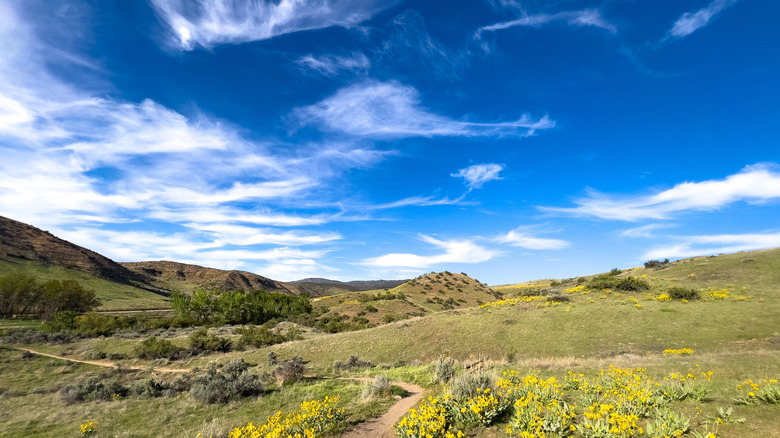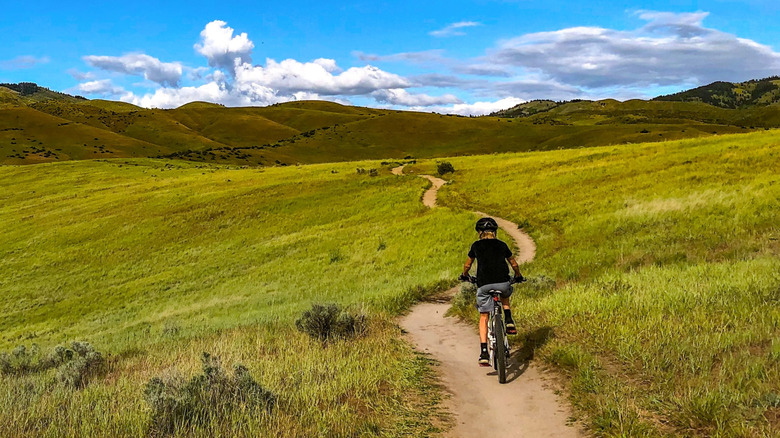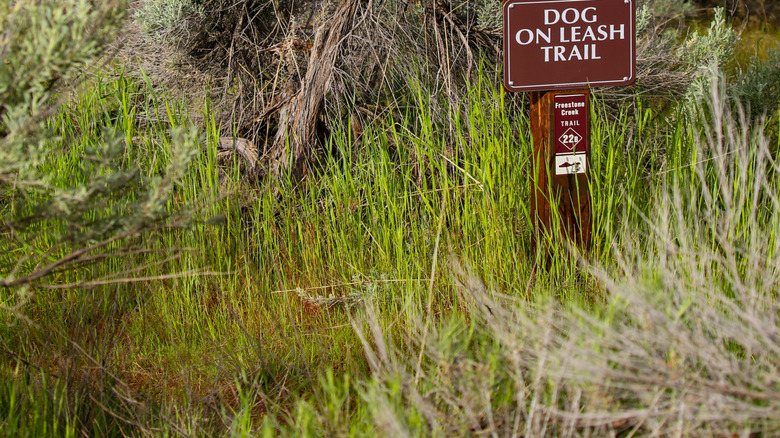Just Outside Of Boise Is Idaho's Hidden Nature Reserve Perfect For Hikers, Bikers, And Active Explorers
Nestled along majestic foothills and the Boise River, Idaho's capital city is set in the middle of a four-season outdoor recreation paradise. To the northeast of the city is the Military Reserve, a hidden gem that many visitors miss on their Boise bucket list despite the area being close enough to downtown for a quick hike with your friends or your pup during lunch. While Table Rock gets much of the hiking glory (and is an incredible place for sunsets), the Military Reserve is Boise's unsung hero and the start (or end) of some of the city's best hiking, biking, and cross-country ski trails, along with an archery range.
Set between two of Boise's oldest and best-known neighborhoods, the North End and the East End, the Military Reserve sits behind what was "new" Fort Boise, built by the U.S. Army in 1863 to protect prospectors who flooded Southwestern Idaho in search of gold in the Boise Basin near, Idaho City, a charming locale with hot springs and Wild West charm. For nearly 80 years, this 734-acre area was used for training and gunnery practice. Later, the City of Boise gained the land for public use.
From downtown, the Military Reserve is just a few blocks away. There is parking at the two main trailheads, Cottonwood Creek and the Freestone Trailhead on Mountain Cove Road, as well as in the lot across from Fire Station #1. Be sure to be back before 11 p.m. Otherwise, your car may be waiting at a tow lot!
Hiking and biking heaven in the Military Reserve
The Ridge to Rivers trail network encompasses over 190 miles of mountain paths and outdoor access managed and created for all, including those with mobility impairments. If you're looking for a short afternoon hike or ride, walk through Boise's "Black Forest" or head up the 2.5-mile Eagle Ridge Trail and Cottonwood Creek Loop. Both trails are accessible, easy to walk, and have plenty to see, from native wildflowers in spring and the city skyline to deer and migratory birds, giving you a panorama of colors, wildlife, and scenic views. Although the Cottonwood Creek trail is shady, bring a hat, sunscreen, and plenty of water. Hikers and bikers looking for a challenge will have 30 trails to choose from, many of which are deeper in the Foothills or run from nearby Bogus Basin Road.
If you've never mountain biked before, the Military Reserve is a great place to learn. At the entrance to the area is Boise's state-of-the-art J.A. and Kathryn Albertson Family Foundation Bike Park, which features trails, obstacles, and jumps for riders of all abilities. Once you've honed your basic skills, head to the Foothills and take the 6-mile Ridgecrest to Bucktail trail for a spin. Advanced riders (especially those who like technical trails) will get a kick out of Bob's Trail, though it is a climb. On your route, you'll pass the Fort Boise Military Cemetery along the Mountain Cove Trail. McU Sports on Jefferson Street has bicycles for rent; just be sure to wear a helmet.
Outdoor ethics to keep in mind
On sunny weekends, residents from Boise, artsy Meridian, and across the Treasure Valley flock to the city's backyard for biking, hiking, cross-country skiing, and dog walking adventures that stretch from Lucky Peak to Avimor, north of Eagle. Locals take pride in caring for some of the city's best recreation areas (over 2,000 volunteer hours annually manage the trails) to preserve the experiences for future generations of Idahoans and visitors. You can do your part by only staying on approved trails, which will stop the spread of Goatheads, which can pop tires and cause sore paws for pups. Moreover, many of the trails border private property, and there are easements in place for recreation; however, access is not guaranteed.
Although you can visit Boise and hike or bike in any season (the city has over 200 sunny days a year), late spring and fall are the best times to visit. You'll not only see the incredible foliage and canopy of color from above, but you'll also likely have drier weather. Boise's wettest season is in spring, when combined with snow runoff, makes for muddy trails. The city of Boise and local county, state, and Federal partners strongly discourage using muddy trails, as you will cause damage to the local ecosystem. After a rainy day, check the current status of the trails on the Rainout app, or play it safe and explore the city's vibrant Greenbelt or one of Boise's magnificent parks. When you're out, don't forget to take it slow and enjoy the scenery. Please be mindful of other bikers, horseback riders, and hikers who will be out on the trails.


